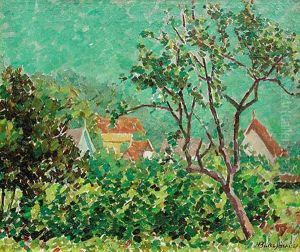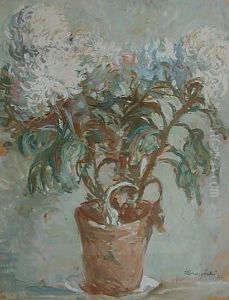Henryk Barczynski Paintings
Henryk Barczyński was a Polish-Jewish painter and graphic artist, born on December 25, 1887, in Łódź, then part of the Russian Empire, now Poland. He was particularly known for his paintings and graphic designs, which often included Jewish themes and depictions of Jewish life, as well as landscapes and cityscapes.
Barczyński studied art in Munich, Germany, and at the École des Beaux-Arts in Paris, which was a common route for many Eastern European artists seeking advanced training at the time. His education in these major European cultural centers allowed him to absorb a variety of artistic influences, which he then blended with his own experiences and perspectives.
His work was part of the expressionist movement, which was characterized by a focus on emotional experience rather than physical reality. This movement was popular in Germany and Austria in the early 20th century, and Barczyński's style often reflected the angst and dynamism typical of this movement. Despite his connection to expressionism, he maintained a distinctive style that combined both traditional and modernist elements.
During the interwar period, Henryk Barczyński's work gained recognition in both Polish and German artistic circles. His pieces were exhibited in numerous galleries and were well received by critics and the public alike. Unfortunately, Barczyński's life and career were cut short by the outbreak of World War II and the subsequent persecution of Jews by the Nazi regime.
Henryk Barczyński died in the Lodz Ghetto in 1941. His legacy includes a body of work that provides a poignant and evocative glimpse into the world of Eastern European Jewry during a time of great change and turmoil. While much of his work was destroyed during the war, some pieces survived and have been exhibited posthumously, allowing contemporary audiences to appreciate his artistic contribution.

